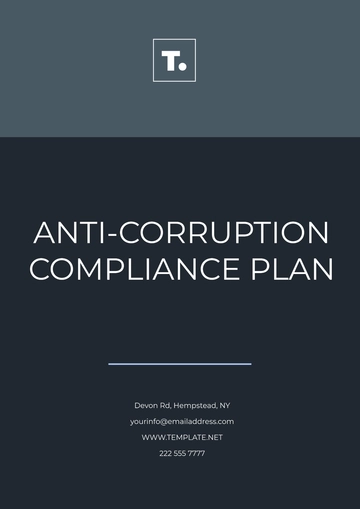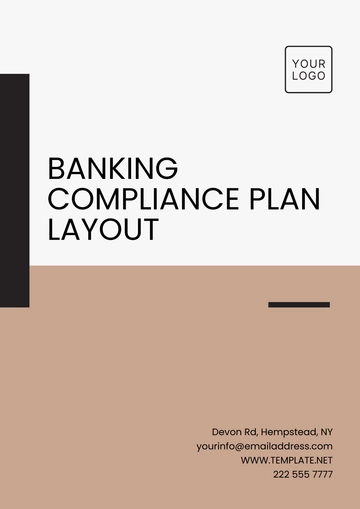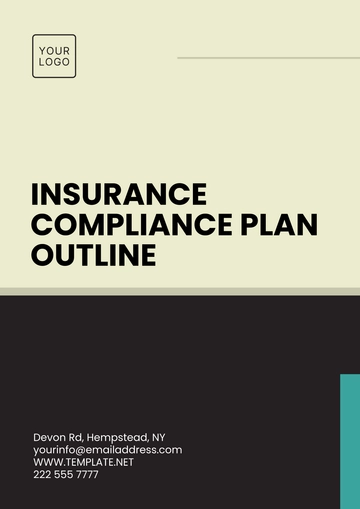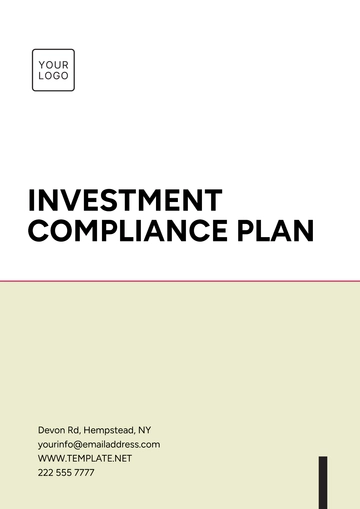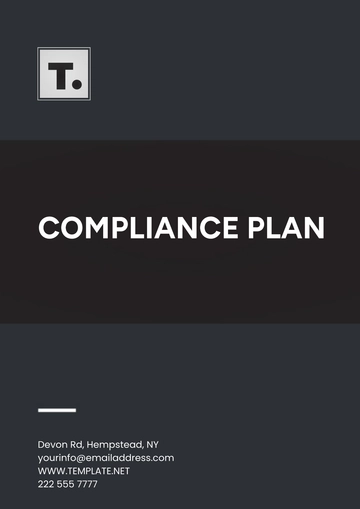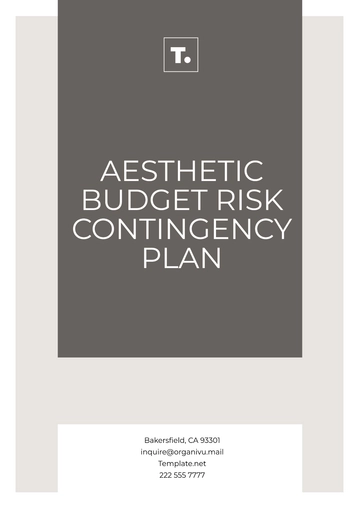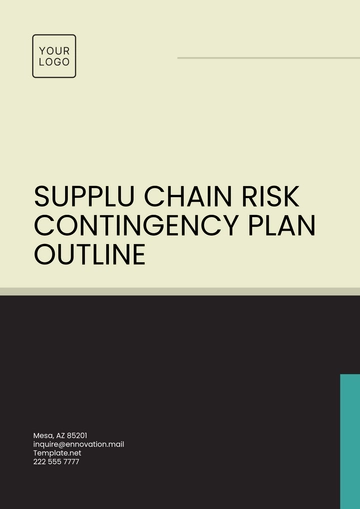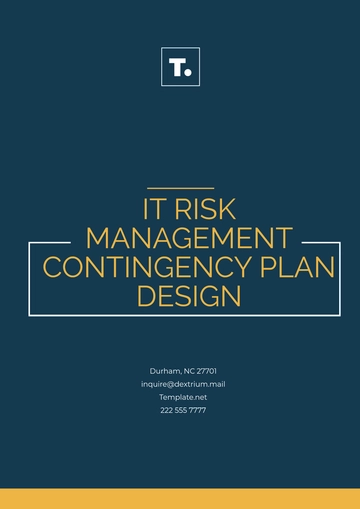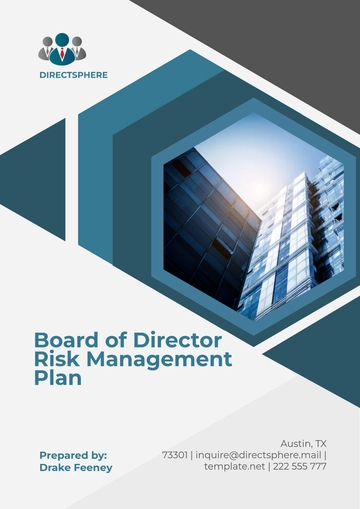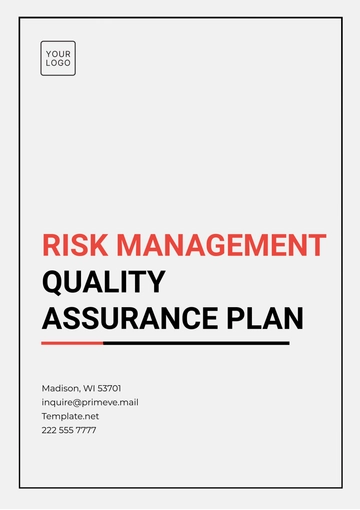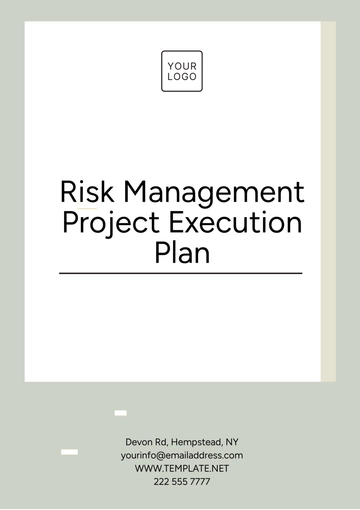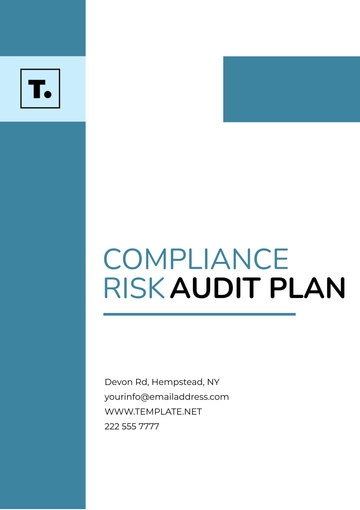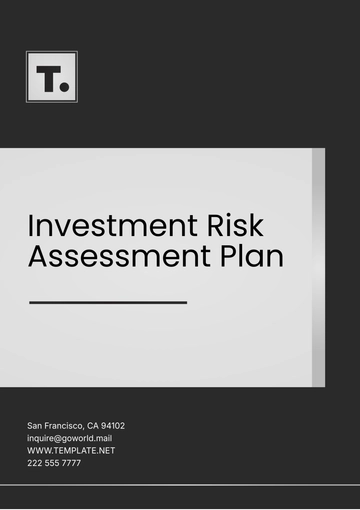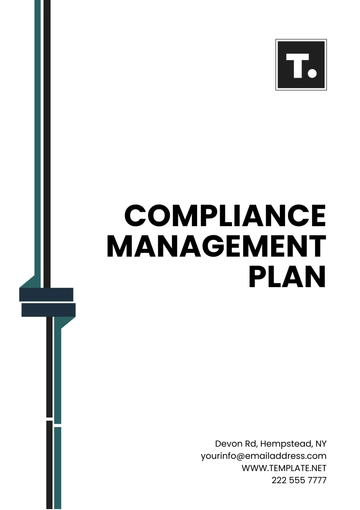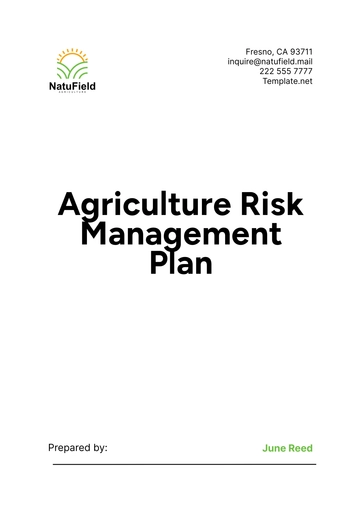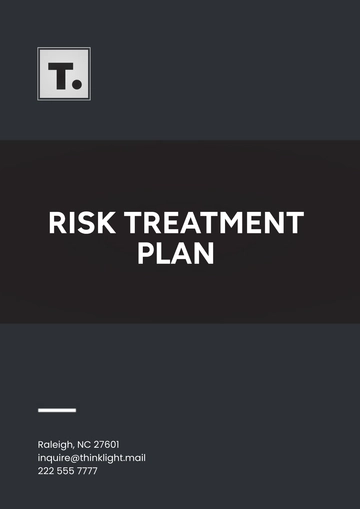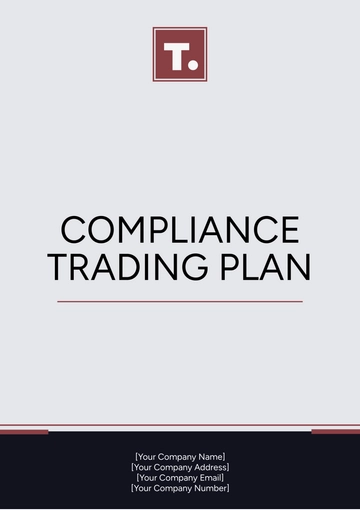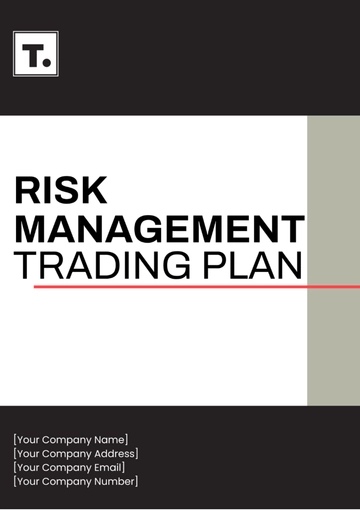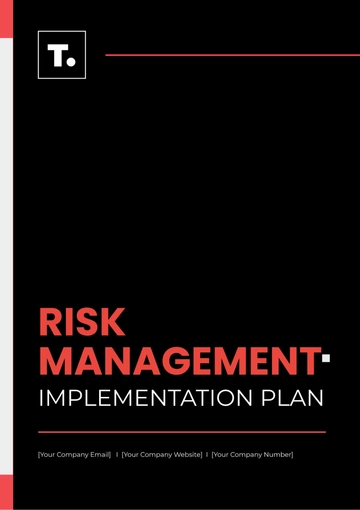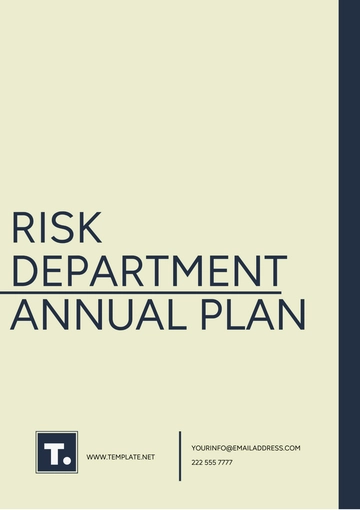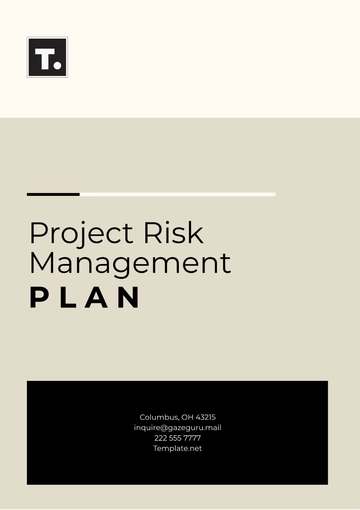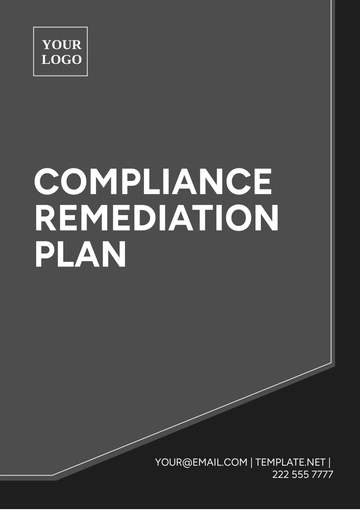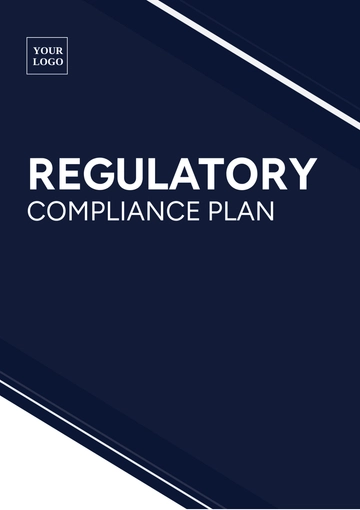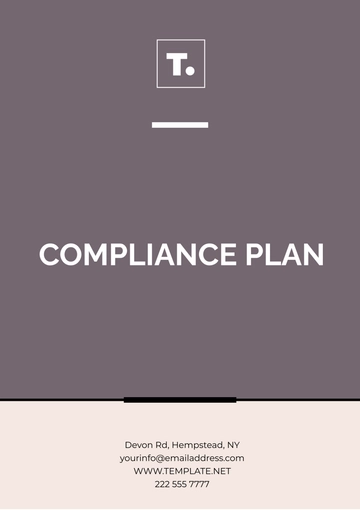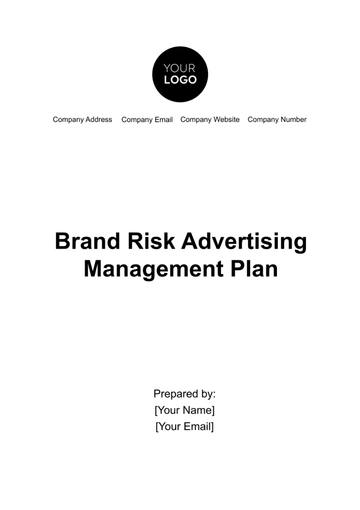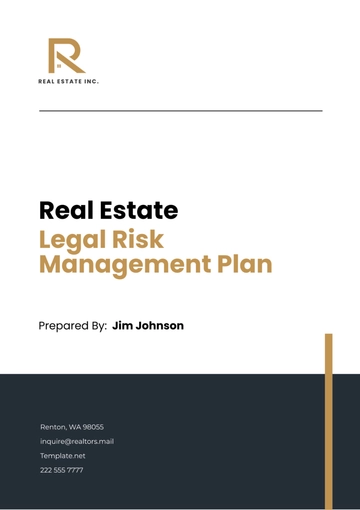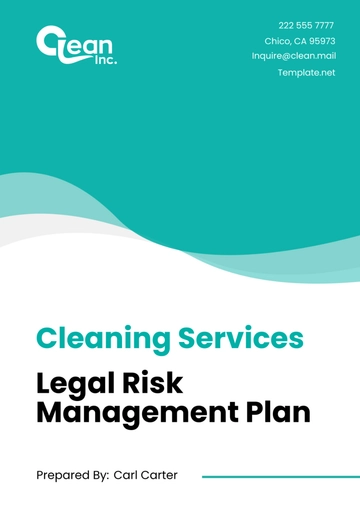Free Regulatory Compliance Plan
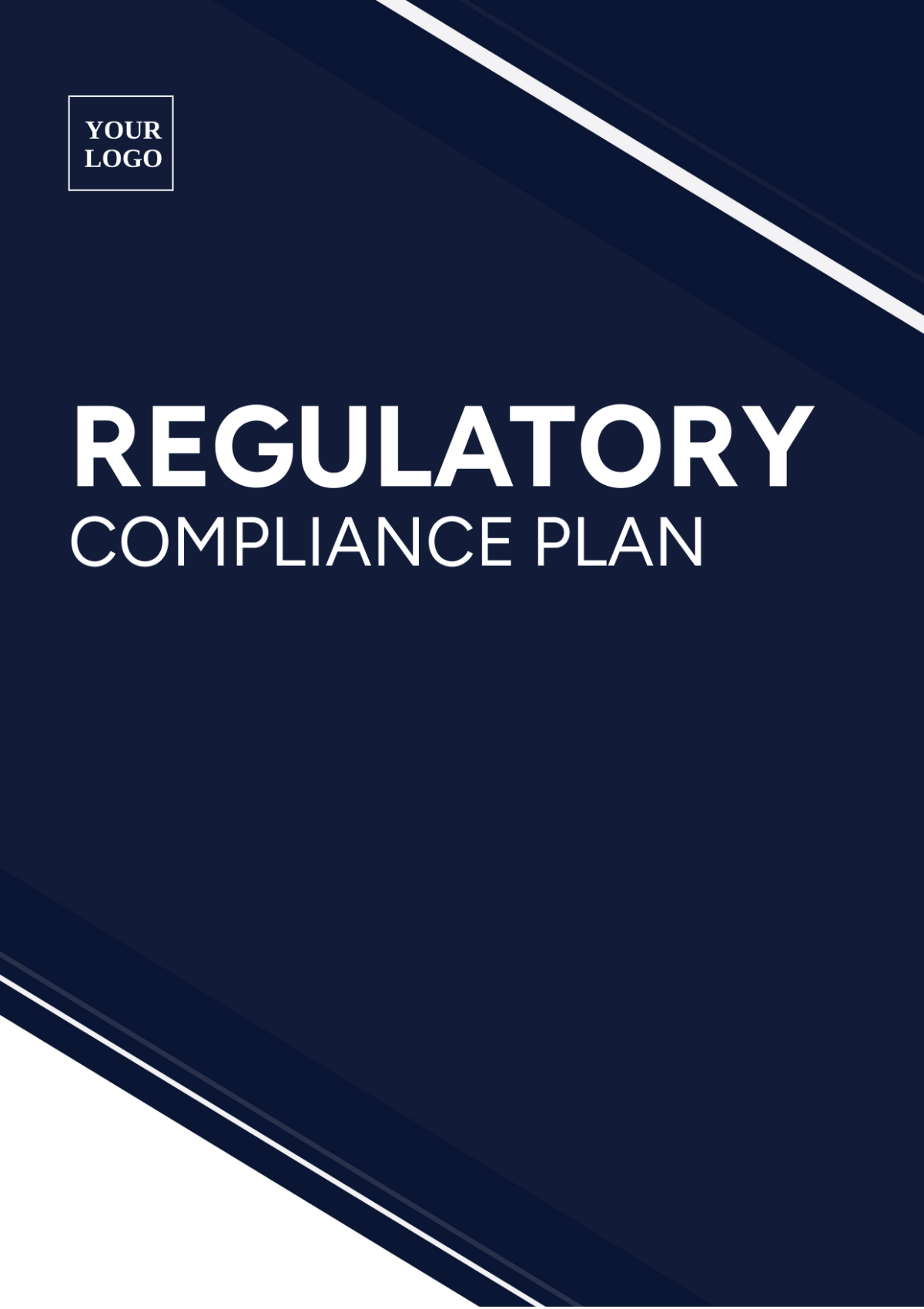
I. Introduction
A. Purpose of the Regulatory Compliance Plan
The purpose of this Regulatory Compliance Plan is to establish guidelines and procedures to ensure compliance with relevant augmented reality (AR) regulations, thereby mitigating risks and promoting responsible business practices.
B. Scope of the Plan
This plan encompasses all AR-related activities conducted by [Company Name], including the development, deployment, and maintenance of AR applications and platforms.
C. Regulatory Framework Overview
The regulatory framework includes but is not limited to:
Federal Trade Commission (FTC) regulations on consumer protection and advertising
European Union's General Data Protection Regulation (GDPR)
Occupational Safety and Health Administration (OSHA) guidelines for workplace safety in AR environments
II. Regulatory Requirements
A. List of Applicable Regulations
FTC Guidelines on AR Advertising
GDPR Regulations on Data Privacy in AR Applications
OSHA Standards for AR Workplace Safety
III. Compliance Management Structure
Roles and Responsibilities
Compliance Officer: Oversees implementation of regulatory compliance measures.
AR Development Team: Ensures adherence to compliance requirements during AR application development.
Human Resources: Facilitates AR safety training and monitors workplace compliance.
IV. Risk Assessment
A. Identification of Compliance Risks
Data privacy breaches in AR applications
Misleading advertising practices
Workplace injuries due to improper AR usage
B. Evaluation of Risks
Severity: High for data breaches, moderate for advertising compliance, and low for workplace safety.
Likelihood: Moderate for data breaches and advertising compliance, and low for workplace safety incidents.
V. Policies and Procedures
A. Overview of Existing Policies
Data Privacy Policy
Advertising Standards Policy
Workplace Safety Protocol
B. Development or Enhancement
Develop AR-specific data privacy guidelines.
Enhance advertising policies to include AR-specific requirements.
VI. Training and Awareness
A. Training Programs
Annual AR compliance training for all employees.
Department-specific training on AR safety protocols.
B. Mechanisms for Awareness
Posters and flyers in common areas.
Monthly newsletters highlighting compliance updates.
VII. Monitoring and Auditing
A. Methods for Monitoring
Regular review of AR advertising content.
Ongoing data privacy assessments.
B. Frequency and Scope
Quarterly compliance audits covering all AR-related activities.
VIII. Reporting and Documentation
A. Reporting Mechanisms
Online incident reporting portal.
Direct communication with the Compliance Officer.
B. Documentation Retention Policies
Retain compliance records for a minimum of five years.
IX. Continuous Improvement
A. Process for Reviewing and Updating
Annual review of the Regulatory Compliance Plan.
Regular updates based on regulatory changes or compliance incidents.
X. Approval

[Regulatory Affairs Division]
[Date]
- 100% Customizable, free editor
- Access 1 Million+ Templates, photo’s & graphics
- Download or share as a template
- Click and replace photos, graphics, text, backgrounds
- Resize, crop, AI write & more
- Access advanced editor
Develop robust compliance strategies with Template.net's Regulatory Compliance Plan Template. Easily editable and customizable, it provides a comprehensive framework for addressing regulatory requirements. Accessible via our Ai Editor Tool, it streamlines plan creation, facilitating systematic compliance management and risk mitigation.
You may also like
- Finance Plan
- Construction Plan
- Sales Plan
- Development Plan
- Career Plan
- Budget Plan
- HR Plan
- Education Plan
- Transition Plan
- Work Plan
- Training Plan
- Communication Plan
- Operation Plan
- Health And Safety Plan
- Strategy Plan
- Professional Development Plan
- Advertising Plan
- Risk Management Plan
- Restaurant Plan
- School Plan
- Nursing Home Patient Care Plan
- Nursing Care Plan
- Plan Event
- Startup Plan
- Social Media Plan
- Staffing Plan
- Annual Plan
- Content Plan
- Payment Plan
- Implementation Plan
- Hotel Plan
- Workout Plan
- Accounting Plan
- Campaign Plan
- Essay Plan
- 30 60 90 Day Plan
- Research Plan
- Recruitment Plan
- 90 Day Plan
- Quarterly Plan
- Emergency Plan
- 5 Year Plan
- Gym Plan
- Personal Plan
- IT and Software Plan
- Treatment Plan
- Real Estate Plan
- Law Firm Plan
- Healthcare Plan
- Improvement Plan
- Media Plan
- 5 Year Business Plan
- Learning Plan
- Marketing Campaign Plan
- Travel Agency Plan
- Cleaning Services Plan
- Interior Design Plan
- Performance Plan
- PR Plan
- Birth Plan
- Life Plan
- SEO Plan
- Disaster Recovery Plan
- Continuity Plan
- Launch Plan
- Legal Plan
- Behavior Plan
- Performance Improvement Plan
- Salon Plan
- Security Plan
- Security Management Plan
- Employee Development Plan
- Quality Plan
- Service Improvement Plan
- Growth Plan
- Incident Response Plan
- Basketball Plan
- Emergency Action Plan
- Product Launch Plan
- Spa Plan
- Employee Training Plan
- Data Analysis Plan
- Employee Action Plan
- Territory Plan
- Audit Plan
- Classroom Plan
- Activity Plan
- Parenting Plan
- Care Plan
- Project Execution Plan
- Exercise Plan
- Internship Plan
- Software Development Plan
- Continuous Improvement Plan
- Leave Plan
- 90 Day Sales Plan
- Advertising Agency Plan
- Employee Transition Plan
- Smart Action Plan
- Workplace Safety Plan
- Behavior Change Plan
- Contingency Plan
- Continuity of Operations Plan
- Health Plan
- Quality Control Plan
- Self Plan
- Sports Development Plan
- Change Management Plan
- Ecommerce Plan
- Personal Financial Plan
- Process Improvement Plan
- 30-60-90 Day Sales Plan
- Crisis Management Plan
- Engagement Plan
- Execution Plan
- Pandemic Plan
- Quality Assurance Plan
- Service Continuity Plan
- Agile Project Plan
- Fundraising Plan
- Job Transition Plan
- Asset Maintenance Plan
- Maintenance Plan
- Software Test Plan
- Staff Training and Development Plan
- 3 Year Plan
- Brand Activation Plan
- Release Plan
- Resource Plan
- Risk Mitigation Plan
- Teacher Plan
- 30 60 90 Day Plan for New Manager
- Food Safety Plan
- Food Truck Plan
- Hiring Plan
- Quality Management Plan
- Wellness Plan
- Behavior Intervention Plan
- Bonus Plan
- Investment Plan
- Maternity Leave Plan
- Pandemic Response Plan
- Succession Planning
- Coaching Plan
- Configuration Management Plan
- Remote Work Plan
- Self Care Plan
- Teaching Plan
- 100-Day Plan
- HACCP Plan
- Student Plan
- Sustainability Plan
- 30 60 90 Day Plan for Interview
- Access Plan
- Site Specific Safety Plan
